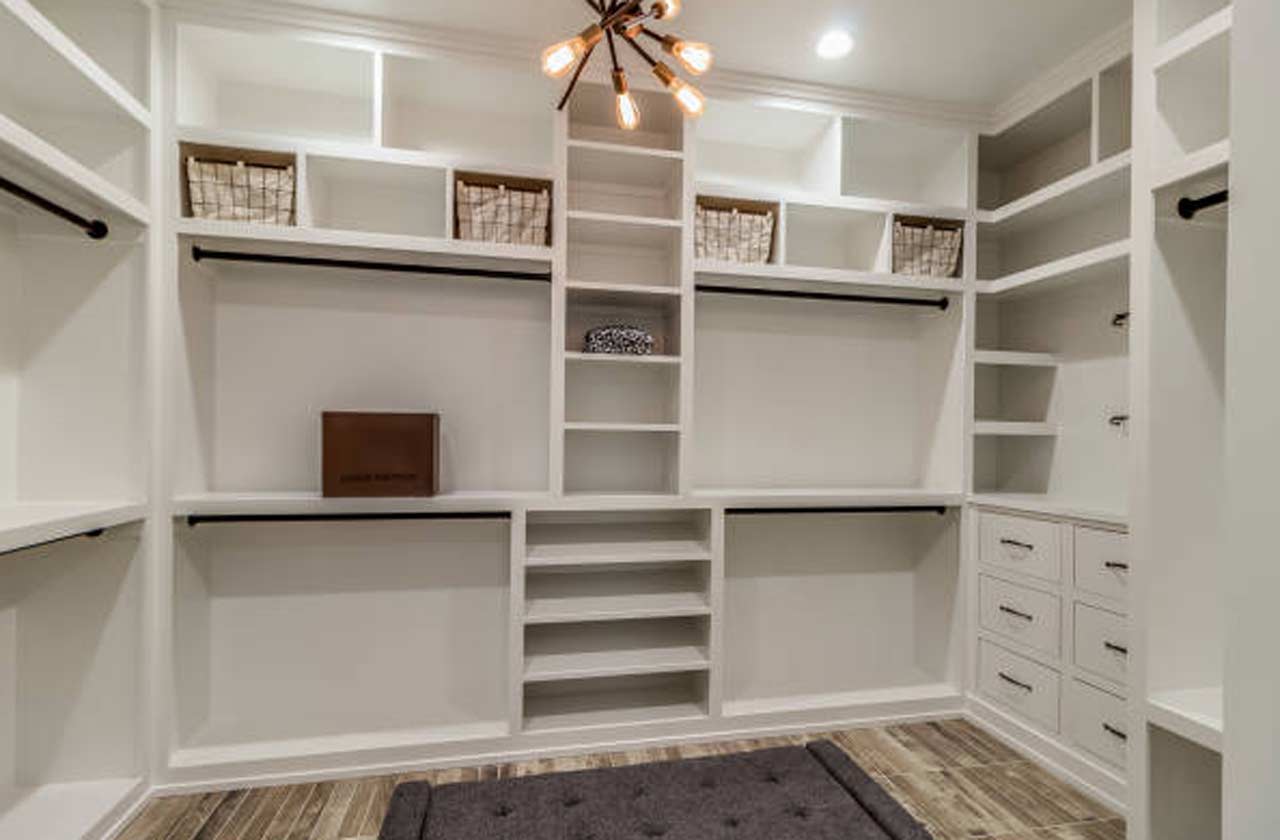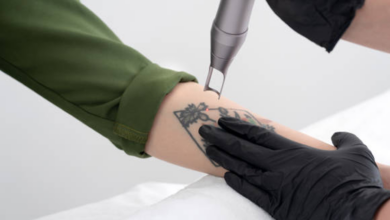 When it comes to creating custom furniture that truly stands out, the design possibilities are only limited by your imagination.
When it comes to creating custom furniture that truly stands out, the design possibilities are only limited by your imagination.
However, bringing those intricate designs to life requires not only creativity but also innovative fabrication techniques.
Whether you’re envisioning a minimalist coffee table with geometric patterns or a statement chair with complex curves, the right tools and methods can make all the difference.
The Evolution of Custom Furniture Fabrication
Custom furniture has always been about craftsmanship, attention to detail, and personal expression. In the past, this often meant relying heavily on hand tools and traditional methods, which could be time-consuming and limited in scope.
However, the advent of digital fabrication technologies has revolutionised the process, allowing for greater precision, speed, and versatility.
Today, techniques like CNC (Computer Numerical Control) laser cutting have transformed how we approach custom furniture design.
This method uses high-powered lasers directed by computer-aided design (CAD) files to cut materials with extraordinary accuracy.
This precision is particularly valuable when dealing with complex designs that require intricate cuts and patterns that would be nearly impossible to achieve by hand.
Why CNC Laser Cutting is Ideal for Complex Designs
If you’re looking to fabricate custom furniture with complex designs, consider using a CNC Laser cutting service that offers several distinct advantages.
First and foremost, the level of precision achievable with laser cutting is unparalleled. Even the most intricate patterns can be executed flawlessly, ensuring that each piece of furniture is a true reflection of the original design intent.
CNC laser cutting is highly versatile. Whether you’re working with wood, metal, acrylic, or even fabric, this technology can handle a wide range of materials, giving you the flexibility to experiment with different textures and finishes.
The ability to switch between materials without compromising on the precision of the cut opens up new possibilities for mixing and matching, creating furniture that’s not just functional but also visually stunning.
Incorporating Innovative Techniques for Unique Results
To truly harness the power of CNC laser cutting, it’s important to combine it with other innovative fabrication techniques.
For instance, digital design software allows you to create detailed 3D models of your furniture before any material is cut.
This not only ensures that every aspect of the design is meticulously planned but also enables you to experiment with different configurations, making adjustments as needed before committing to the final cut.
Additionally, integrating traditional craftsmanship with modern techniques can result in truly unique pieces. For example, you might use CNC laser cutting to create precise components, which are then assembled and finished by hand.
This hybrid approach allows for the efficiency and accuracy of digital fabrication, combined with the personal touch that only handcrafting can offer.
Concluding Remarks
Fabricating custom furniture with complex designs is no longer a daunting challenge, thanks to the innovative techniques available today.
By leveraging the precision, efficiency, and versatility of laser cutting services, you can bring even the most intricate designs to life with ease.
Whether you’re a designer, a craftsman, or simply someone who appreciates the art of custom furniture, these technologies open up a world of possibilities for creating pieces that are as unique as they are functional.
Embrace these advancements, and watch your creative visions come to life in ways you never thought possible.
Frequently Asked Questions
Q1: What is CNC laser cutting, and why is it important for fabricating custom furniture?
A: CNC (Computer Numerical Control) laser cutting is a precision-based method where high-powered lasers, guided by computer-aided design (CAD) files, cut through materials with extreme accuracy. It is essential for custom furniture because it allows designers to achieve intricate patterns and complex designs that are difficult or impossible to create by hand. The process is highly efficient and versatile, working with a variety of materials like wood, metal, acrylic, and even fabrics.
Q2: How does CNC laser cutting improve the quality of custom furniture with complex designs?
A: CNC laser cutting significantly enhances the quality of custom furniture by:
- Offering unparalleled precision in cutting, ensuring that even the most complex designs are executed flawlessly.
- Reducing human error, as the process is fully automated and guided by a pre-designed CAD file.
- Allowing for clean edges and intricate detailing that would otherwise require extensive manual work.
- Ensuring consistency and repeatability in producing multiple identical components for larger pieces or series.
Q3: Can CNC laser cutting work with different materials?
A: Yes! One of the greatest advantages of CNC laser cutting is its versatility. It can work with a wide variety of materials, including:
- Wood (for tables, chairs, cabinets)
- Metal (for structural components or decorative features)
- Acrylic (for modern, minimalist furniture)
- Fabric (for upholstery or softer furnishings)
This flexibility allows designers to mix and match materials, which is essential for creating custom furniture that is both functional and aesthetically unique.
Q4: What are the benefits of using digital design software in custom furniture fabrication?
A: Digital design software, such as CAD, plays a crucial role in custom furniture fabrication by:
- Allowing designers to create 3D models of the furniture, providing a clear visual representation before any materials are cut.
- Enabling precision planning, ensuring that all components fit perfectly together.
- Offering the ability to make changes and adjustments to the design easily, ensuring the final product matches the vision.
- Reducing material waste by optimising the cutting process, which can save both time and costs in production.
Q5: How does CNC laser cutting differ from traditional handcrafting methods?
A: CNC laser cutting differs from traditional methods in the following ways:
- Speed and efficiency: CNC laser cutting can produce complex designs much faster than manual methods.
- Precision: The level of accuracy with CNC cutting is far superior to that achievable by hand.
- Complexity: Intricate patterns, detailed cuts, and tight tolerances are easier to achieve with digital tools.
- Automation: Once the design is programmed, the cutting process is automated, reducing labour costs and the potential for errors.
That said, traditional handcrafting still has its place, especially in adding personal touches or in the assembly and finishing stages of a project.
Q6: How can traditional craftsmanship be integrated with CNC laser cutting?
A: Combining traditional craftsmanship with modern CNC laser cutting offers a hybrid approach to custom furniture making. This could involve:
- Using CNC technology to create precise, intricate parts of a design.
- Manually assembling these parts to give the piece a handmade touch.
- Adding hand finishes like sanding, polishing, or applying unique stains, which provide a personal, artisanal quality to the final product.
- Creating custom joints or connections that require a skilled craftsperson’s eye for detail and hands-on experience.
This blend of old and new techniques results in furniture that is both technologically advanced and personally crafted.
Q7: Are there limitations to using CNC laser cutting for furniture design?
A: While CNC laser cutting is a powerful tool, there are a few limitations to keep in mind:
- Material thickness: Some lasers have difficulty cutting through very thick materials, especially metals.
- Initial setup costs: The upfront costs for designing CAD files and operating the machinery may be higher than traditional methods, though this can be offset by long-term efficiency and precision.
- Design complexity: While CNC can handle intricate designs, it is still limited by the type of materials used. Some fragile or extremely complex structures may require additional support or assembly by hand.
Q8: What are some innovative techniques that can be combined with CNC laser cutting?
A: Besides CNC laser cutting, several other innovative techniques can be incorporated into the custom furniture design process, such as:
- 3D Printing: Useful for creating prototypes or small components that require precision and complex geometry.
- CAD and CAM Software: Helps designers visualise their ideas and translate them into instructions for CNC machines, ensuring accuracy and consistency.
- Modular Design: CNC allows for creating parts that can easily be assembled or disassembled, perfect for modular or flat-pack furniture designs.
- Mixed-materials Approach: Designers can combine laser-cut pieces with different materials, such as wood and metal, to create unique textures and contrasts in the furniture.
Q9: What are the cost considerations when using CNC laser cutting for custom furniture?
A: Costs for CNC laser cutting can vary depending on:
- Material type: Different materials have varying costs, and some may require more laser power or time to cut, impacting pricing.
- Design complexity: The more intricate the design, the more time it may take to cut, which can increase costs.
- Size of the project: Larger projects that require more material or multiple components may be more expensive.
- Setup fees: Initial setup, including creating CAD designs and machine calibration, can have upfront costs, but this can save time and money in the long run with efficient production.
Despite these factors, the precision and reduced material waste often result in overall cost savings for complex custom projects.
Q10: What’s the future of custom furniture fabrication?
A: The future of custom furniture fabrication lies in the continued integration of advanced technologies like CNC laser cutting, 3D printing, and AI-driven design. As these technologies evolve, we can expect:
- Greater design freedom: More complex and personalised furniture designs will be easier and faster to produce.
- Sustainability: Efficient use of materials and reducing waste will become more common, supporting eco-friendly practices.
- Customization: The trend towards creating one-of-a-kind pieces will only grow as technology makes it easier for designers to meet specific client preferences.
The combination of creativity, digital tools, and craftsmanship will shape the next generation of custom furniture making.







